PiperJaffray analyst Gene Munster this week issued a research note to clients in which he addresses "22 unanswered questions surrounding the Apple story."
iPod Related Questions:
Will Apple Offer A Built-In FM Tuner In The iPod?
While innovation on the iPod will no doubt continue, we do not expect Apple will integrate an FM tuner, at least in the near term. We believe the company does not feel there is a strong desire from customers to have an integrated FM tuner; Apple has said that it thinks customers want to be their own DJs. Also, Apple only has an interest in adding features to an iPod that are very high quality; the quality of reception on FM tuners in existing MP3 players has been weak.
Â
Why Did We See A Seasonal Downtick In iPods In The March Quarter For The First Time In 3 Years?
iPod sales were down in the Mar-06 quarter for the first time in 3 years. While this is the first sequential downtick we have seen for the iPod in some time, it is important to keep in mind that in prior March quarters major iPod launches occurred resulting in abnormal sequential March quarter growth. There would have been downward seasonality in the previous two March quarters, but in the Mar-04 quarter the iPod mini was introduced and in the Mar-05 quarter we saw the launch of the iPod shuffle. Backing out those two March quarter product launches, we would see that there always has been March quarter iPod seasonality; it was just less evident in prior years because of the new product releases.
Â
How Is Apple Attacking The International iPod Opportunity?
2006 will be a year in which Apple puts more focus on European markets. In February 2005 the company estimated that iPod market share in Germany was 5%; today it's 21%. Market share in France is currently 11%. We believe the company will look to grow iPod market share in Europe through marketing, not by competing on price.
Â
How Many iPods Does Each iPod Owner Have?
We had originally thought that the number of iPods/iPod owner was 1.5 or greater. After looking at the growth of iPods in the last two quarters, we now believe that the number of iPods/iPod owner is between 1.0 and 1.5. Assuming 80% of iPods have been sold in the US, and assuming 1.2 iPods per iPod owner, equates to 29.3m iPod users in the US; about 10% of the US population has an iPod. We consider 10% a low penetration of iPods.
Is Apple Going To Make An iPhone?
We continue to believe there is a 75% chance that Apple will launch an iPhone (iPod/cell phone) within the next 12 months. In conversations with Apple, however, we have found that the company continues to say the primary focus will be on a standalone music device. The company has said it is possible that a music enabled phone could cannibalize the demand for a lower priced iPods. For example, the inclusion of a digital camera in cell phones did not impact demand for higher end cameras, but low priced cameras came under attack. Essentially, the low end of the camera market was taken away. The company has indicated that it does not want to see the low end of the iPod market ge t cannibalized by music enabled phones. While we continue to believe there is a high chance that Apple will launch an iPhone in the next 12 months, the company says that the right path for Apple is to continue to pursue devices with one primary feature and not focus on multiple functions in one device.
Â
How Can Apple Keep The iPod Competitive?
We believe the economies of scale with Apple's iPod provide the company with a significant competitive advantage, as competitors are unable to significantly undercut iPod pricing. Conversations with Apple show that it believes the key to staying competitive is to create the best experience possible, continually innovating in the product pipeline, and trying not to invent new product categories where no problem exists, but inventing new products to solve an existing problem. Apple management focuses on the problems consumers are facing and tries to focus product development on ways to solve those problems within the constraints of the supply chain. In addition to innovating and bringing new products to market, the existing iPod eco-system keeps the product competitive. There are more than 2,000 iPod accessories in the market: iPods work in users' homes, cars, or anywhere they take it. iPod owners have invested in community and, in general, it appears people feel the iPod eco-system and quality outweigh potential limitations of being tied to a proprietary file format.
Â
Why Can't Sony Figure Out The MP3 Player Market And Compete With The iPod?
We believe Sony has done a poor job of marketing its MP3 players, starting with naming the products (ex: should I buy the "NW-E505" or the "NW-E307"?). In general, from Apple's perspective, the company believes that Sony has not gotten a strong grasp of the recipe required to create a strong customer experience with both hardware and software. Sony's historical strength has been in its hardware; most of the company's engineers are hardware focused. Sony, therefore, has been unable to create a customer experience similar to what exists with the iPod/iTunes integration.
Â
Will The iPod shuffle Stay In The Lineup And When Will It Be Updated?
The inclusion of the shuffle in iPod family was originally about protecting the low end of the market. At the time the shuffle was released, Apple did not have anything below $249 and competitors' products (Creative, iriver, Sony, etc.) were seeing some success in the low end. The iPod shuffle took the low end of the market away from competitors and, most notably, negatively impacted Creative's market share. While there has been some speculation that Apple will either discontinue or add new features to the shuffle, we believe the company wants to continue to provide a very low end player with few features. Adding features could impact the iPod nano market and removing the product from the lineup would be giving away the very low end market to other players.
Â
iTunes Related Questions:
Â
Is iTunes Headed For A Tiered Pricing Model?
Apple's recent renegotiations with 4 of the major record labels show that the $0.99 song is here to stay for a while. Although iTunes Japan does have some tiered pricing (about 10% of the iTunes Japan library has tiered pricing), Apple does not intend or desire to have tiered pricing on iTunes in any other geography. We see this as another indication of Apple's continuous strive to make its products and services simple to use.
Â
How Many Videos Are Sold On iTunes Per Week And Are iTunes Videos Any More Or Less Profitable Than iTunes Songs?
We believe approximately 1 million videos are sold on iTunes each week, compared to around 21 million songs sold per week. In other words, about 4% of iTunes downloads are video based. Regarding profitability of iTunes videos, the company recently indicated to us that iTunes videos and iTunes songs have very similar profitability levels. Overall, the iTunes store is run at a level that is slightly better than breakeven.
Â
Will We See Full Length Movies On iTunes Anytime Soon?
We see a chicken and egg scenario forming with full length movie downloads. What will come first?: 1) full length feature film on iTunes, or 2) a larger screen video iPod. It is difficult to say how this scenario will play out. It is also important to look at what value would be gained from having full length movies on iTunes. Right now, a consumer can easily find any full length movie on DVD or on-demand. Apple has focused on TV shows because unlike full length movies, there is a clear value proposition to the consumer and the networks in offering TV shows. For a consumer, if you miss an episode (or entire season) of a show, iTunes is the only way to see it unless you want to wait until the episode comes out on DVD. The benefit to the networks is that this is a new way to monetize original TV content. Ultimately, we expect that iTunes will offer feature length movies on iTunes, but we do not believe this is a top priority for the company at this time.
Â
Will Apple Start Selling Advertising In The iTunes Music Store?
Napster.com was recently launched as an ad based business model and there has recently been some chatter in the trade press suggesting that Apple will sell ad space on iTunes. We do not believe that it will sell ad space on iTunes. In addition, conversations with the company have pointed to a continuation of an ad-free iTunes. There are some podcasts that sell ads, but we believe Apple knows the value of an ad free experience and will not sacrifice long-term customer satisfaction for a near term pop in ad revenue.
Â
Mac Focused Questions:
Â
Why Will The Release Of The iBook Not Lead To Another Transition Quarter?
While Apple had considerable problems getting a reasonable level of inventory within the first several weeks following announcement of the MacBook Pro, we do not expect to see similar issues when the iBook is launched. We believe Apple wanted to release the MacBook Pro in conjunction with Macworld '06 and, we believe, the company was, therefore, forced to announce the product before it was fully prepared. With the iBook, Apple does not have to manage around a set tradeshow date and can simply announce and ship the product when it is completely ready.
Â
What Will Apple Do With Mac Pricing In The Coming Years?
Apple has indicated that it will not look to gain market share by lowering price and negatively impacting margins, but will look to gain share by making the highest quality product available and continuing to charge a premium price, assuming consumers will pay for quality. The product that Apple could really try to gain market share with is the Mac mini, which is the lowest priced product in the Mac lineup. We were surprised that Apple raised pricing (from $499 to $599) on the Mac mini when it transitioned to the Intel platform, but in fairness to Apple, the Mac mini did get some upgraded features with a 1.5GHz processor, up from 1.25GHz and the inclusi on of Front Row. We see the Street's fixation on market share as an overly simplified approach. We believe Apple will address the market share challenge by trying to create the best products and selling them at an "appropriate" price.
Â
Why Is Boot Camp Important?
Boot Camp targets the potential Mac buyer who has one or two applications (ex: game or work related application, etc.) that has to be run in Windows. Now the customer essentially has two computers in one. Additionally, boot camp is a safety net for those consumers who are thinking about buying a Mac but have been concerned that they would not like the Mac OS.
Â
Will Apple License The Mac Operating System?
Apple has stated that it has no intention of licensing the Mac operating system. Also, the company has said it will not sell or support the Windows operating system, despite integrating Boot Camp into the next version of the Mac OS (Leopard), which will likely be released in early CY07. Despite the comments from the company on the subject, we believe there is a small chance that Apple will sell the Windows operating system either in its retail stores, or less likely, as an option when buying a Mac.
Â
Questions Focused On Apple's Retail Stores:
Â
What Caused The Weaker Than Expected Apple Retail Store Performance In The March Quarter?
Apple retail store revenue was down 41% from the Dec-05 quarter to the Mar-06 quarter, compared to up 2% from Dec-04 to Mar-05. We believe the March quarter was negatively impacted by the transition to Intel. When Apple launched the new iMac with Intel and announced the MacBook Pro at Macworld in mid January, all of the Apple retail stores shifted the marketing focus to Intel. Our checks with 60 Apple retail stores throughout the quarter indicated that Apple retail stores did not have inventory, even for display models, until the first week of March. In other words, consumer awareness of the Intel shift was high, but there was virtually no availability of the MacBook Pro and limited availability of the iMac for 75% of the March quarter. We believe the aggressive marketing of Intel based Macs had a negative impact on iBook sales as well. We now believe that the MacBook Pro availability is high, based on our Apple product lead time tracker, which evaluates changes in shipment times for various products.
Â
What Should We Expect From Apple Retail Stores This Year?
Apple has stated that it will look to add 30-40 retail stores per year. Most stores added will be in the U.S., with a secondary focus in Europe. Adding 30-40 stores this year would bring the total number of Apple retail stores to ~175 by year end. While the March quarter was the first ever down quarter for Apple's revenue-per-retail store, the company does expect that metric to rebound and that revenue per retail store will be up in CY06 vs. CY05. We expect a greater focus on switching to Mac in the retail stores this year vs. prior years. Apple has recently started a PC-to-Mac switcher ad campaign, and we believe in-store marketing will be heavily weighted toward this theme and less on the iPod.
Â
Why Are The Apple Retail Stores So Unique?
The difference between Apple retail stores and other stores is that Apple is hoping the real relationship with the customer starts when the customer is buying the product and is at check-out, while with other retail stores, the relationship with the customer ends at check-out. The goal of the Apple retail store is to move customers from making a one time purchase into becoming ongoing participants in the store. Apple wants people to keep revisiting Apple's offerings. Pro Care is an example of this: at $99 a year Pro Care is essentially a membership to the Apple store and all the resources that are available at the store. While the company does not disclose attach rates, we estimate about 25% of people who buy a Mac in an Apple retail store will buy Pro Care. If you assume that Apple will sell 200,000 Macs in its retail stores in CY07, that is 50,000 members at $99 a year, or $4.9m in income from store memberships. We believe the retail strategy gives customers the ability to go deep (Genius Bar and Studio) and, ultimately, buy more Apple products. It is the strong Apple service element that is really driving more revenue per customer. As a sidepoint, Apple is starting to create a more definable career path for its retail store workers (more full time positions) to try to retain its top employees.
Â
What Will Apple's Marketing Look Like Over The Next Several Quarters?
Over the past two years, we have seen that Apple's advertising in print, on TV, and on the web has been almost entirely focused on the iPod. The retail stores, before January of 2006, typically showcased iPod advertising in the front windows. Based on comments from Steve Jobs at the recent Apple shareholder meeting, we believe that in the next twelve months Apple's advertising strategy will be a 50/50 mix between iPod and Mac. We believe this could have a positive impact on the halo effect. New Mac ads are just starting to appear with a marketing campaign that is looking to entice PC-to-Mac switche rs.
Â
General Business Operation Questions:
Â
What Is Apple Doing With Its >$9 Per Share In Cash?
Apple wants to take a conservative approach to its use of cash and will keep much of it on hand. That said, the following uses of cash are underway or upcoming: $500m in pre-payment of nand flash, $350m stock buyback (essentially for sr. level management), and $50 million for a data center. Other uses of cash going forward: nand flash, new campus, and possibly a stock buyback. CEO Steve Jobs did specifically indicate at the company's recent shareholder meeting that Apple has no intention of paying a dividend.
Â
What Is The Reasoning Behind The New Apple Campus In Cupertino?
Currently, Apple's primary campus is 32 acres and houses 6 buildings. There are another 8 buildings housing Apple employees within several minutes of the primary campus. Apple has found 50 acres that it was able to purchase and intends to use as a second Cupertino campus. The second campus is situated about 10 minutes from the current campus. Apple will consolidate much of the personnel that is currently spread around in buildings that are not on the main 32 acre campus. We estimate about 60%-70% of the new campus will be used for the relocation of people in the 8 buildings that are not on the primary campus and 30-40% of the new campus is intended for company growth. The company has indicated that the key reason for the new campus is to increase efficiency (employees will not have to drive between campuses).
 AppleInsider Staff
AppleInsider Staff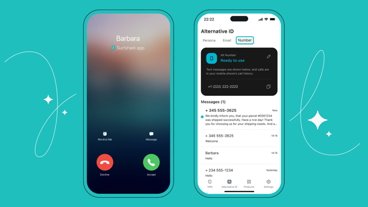

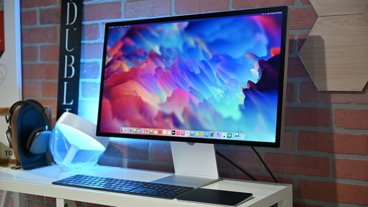
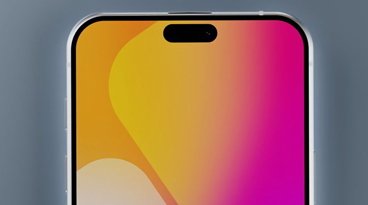

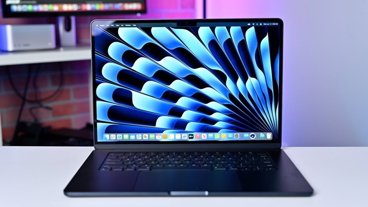
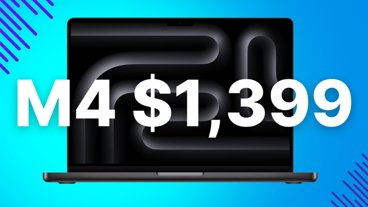
-m.jpg)



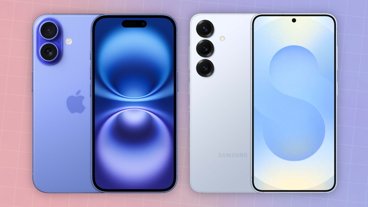


 Wesley Hilliard
Wesley Hilliard
 Malcolm Owen
Malcolm Owen
 Amber Neely
Amber Neely
 Christine McKee
Christine McKee
 Andrew Orr
Andrew Orr
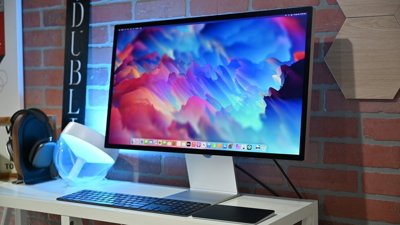
 Mike Wuerthele and Malcolm Owen
Mike Wuerthele and Malcolm Owen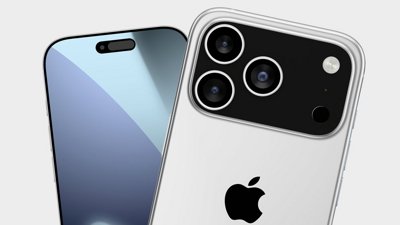
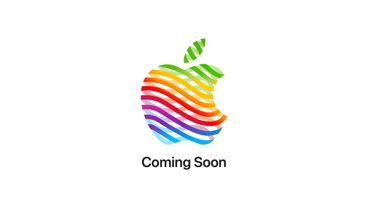
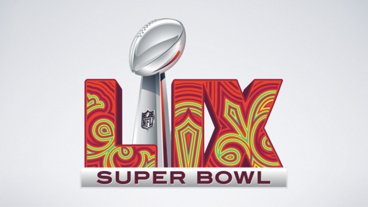








25 Comments
This man makes a lot of sense. Good summary of where the evidence points for the future.
Great article. More of that please.
Who is this guy, more importantly, are these facts or is this "his" opinon? Opinions are fun, but that's the extent of it's usefulness.
Hmm this is OPNION.
This guy knows as much as the next person about what Apple do.
Hmm this is OPNION.
This guy knows as much as the next person about what Apple do.
Definitely opinion, peppered with a bit of fact. Otherwise a well thought out OpEd IMO.